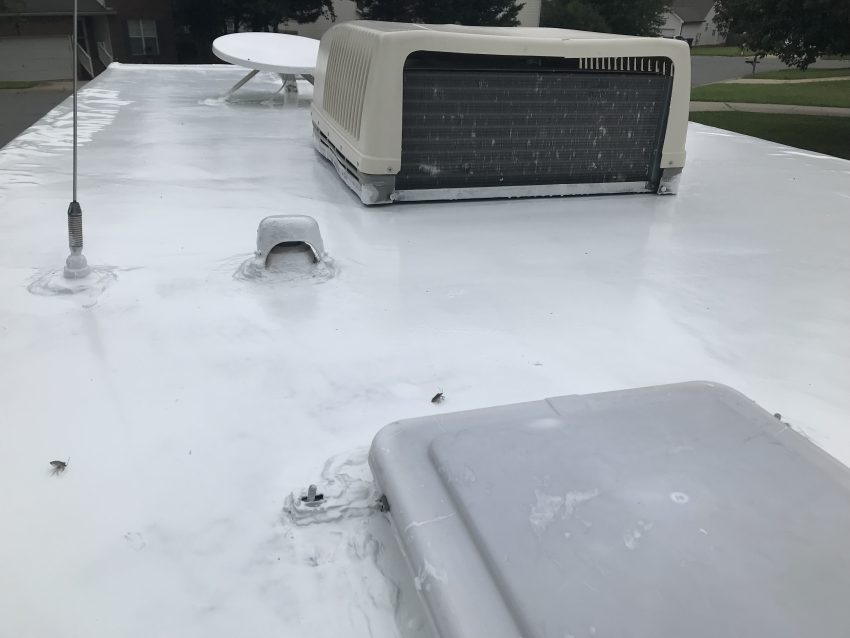The main issue with RV roofs is that you never see them, so it can be extremely difficult to know when your roof requires repair.
Inspecting your RV’s roof and seams regularly will help you immensely. You’ll only have to do minor repairs every now and then, rather than having to do one giant repair after you realize the roof is in dire shape.
The Primary Culprit
The primary culprit of roof damage and damage to your RV is water. Water damage to your RV will lower its value in an instant. It’s just too bad that damage can be so instantaneous, while RV roof repair can be so time-consuming.
If you ever scrape a low-hanging branch or have to endure a hail storm, be sure to check and inspect your roof for any minor or major damages. Be careful when you’re going up on your roof, and before you go up, ask yourself the following questions:
“Is there a ladder on my RV to take me up to the roof? Can my RV’s roof support my weight?”
If there’s no ladder on the back of your RV and you’re unsure the roof will be able to support you safely, then lay out some sheets of plywood on the roof to more evenly distribute and support your weight.
It’s understandable that you likely don’t happen to just carry sheets of plywood during your trips, but you’d be surprised if you asked around at an RV park. Also, consider packing plywood for your next trip, especially if your RV’s roof doesn’t support weight very safely.
And even if you know and trust that the roof on your RV is able to support plenty of weight, you may be able to help out another RV owner with your plywood supply.
Fixing a Damaged RV Roof
RV roof repair doesn’t need to be such a waste of time. One way to fix your roof is to add a new, durable coating that seals and protects any parts of your damaged roof and can go on just about any type of RV roof.
Of course, before you add a new coating or decide to fix your roof, there are some steps and precautions to take. First, you need to thoroughly clean your roof. Next, you’ll need to get your roof dried and to scrape off any debris or old material from the roof.
Be careful while you scrape debris and old material from your RV’s roof: doing this can easily lead to puncturing the roof or making the damage even worse.
If your RV roof is made from rubber and only requires minor repairs, use a tube of liquid rubber to fill areas or use some specially designed tape that’s made specifically for rubber roof repairs. Whatever the case, if you own an RV with a rubber roof, you have a roof that’s highly durable and fairly easy to repair.
Also, be sure to always avoid using petroleum-based products for cleaning your rubber RV roof. These products will harm your rubber roof and eventually damage it extensively.
Fiberglass and aluminum RV roofs often require more maintenance and are not as durable as rubber roofs. The main advantage of these roofs is many people believe they look nicer. Using a durable coating is the best and most convenient way to fix fiberglass and aluminum roofs, and it also offers them better durability and longevity as well.
The Run-Down
Essentially, it’s crucial for you to consistently inspect the roof of your RV, to repair small cracks as soon as you find them, and to use a durable sealant to protect the roof. Also, buying an RV cover offers you a great way to prevent damage to your RV when it’s idle or parked.



A thorough wash with our Roof Protect will allow for a oil and mold-free surface for the Rv roof magic to adhere properly. This will help kill any mold spores on the roof
Thank you